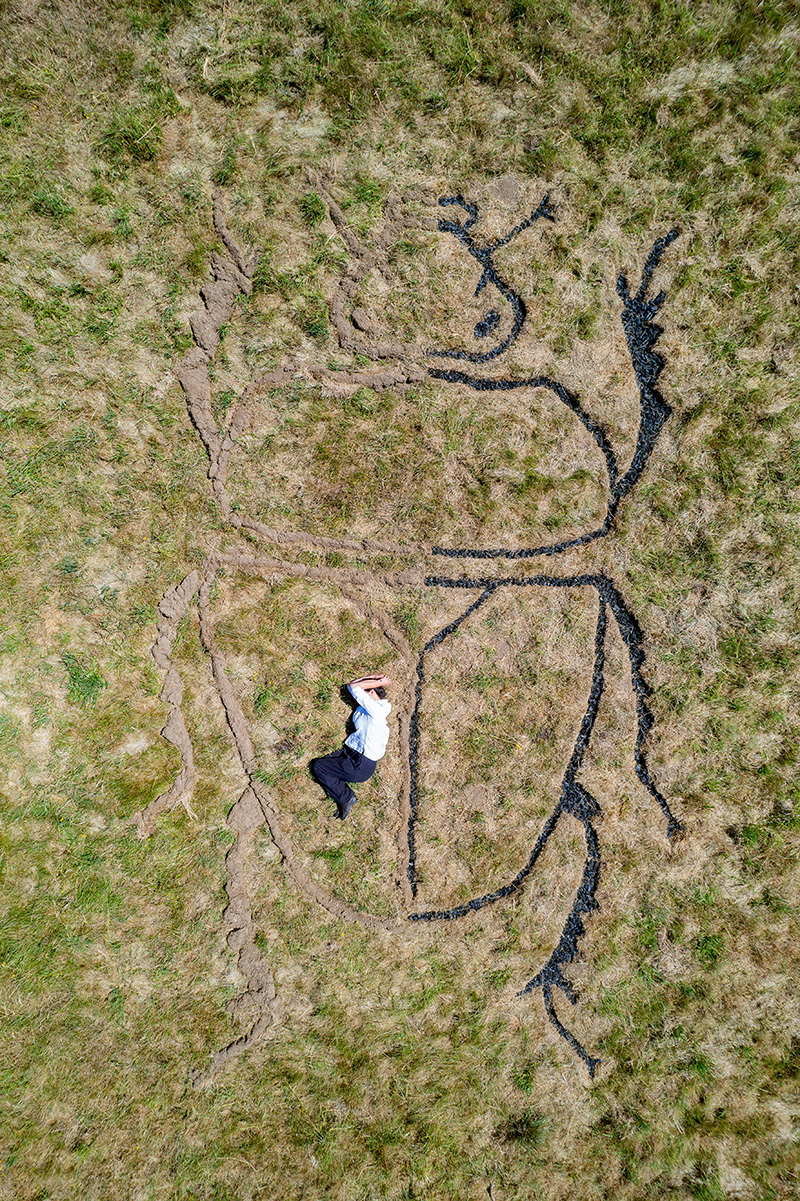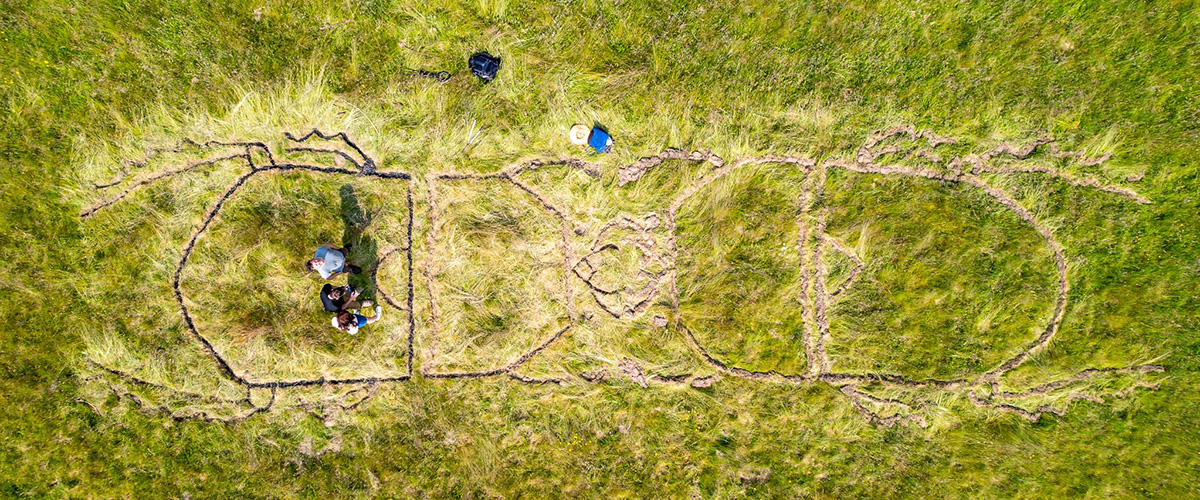During Wales Nature Week, under the July full moon and in the hottest UK summer on record, I created Dung Beetle Land Art on an upland regenerative farm in the Ceiriog Valley, Wales.
The project was designed as an experiment: to realise an artwork I had long imagined and to bring people together in the landscape they love. Through art, ceremony and education, we shared how farming landscapes can enhance biodiversity and store carbon for the future.

I hand-cut turf, lifting hot, dry sods and setting them aside to mirror the image in the soil I’d exposed. A giant dung beetle emerged—half turf, half black carbon. The cows had just arrived, mob grazing and leaving dung to invite beetles back to this once-depleted field of ysgallen, or thistle, a plant that signals compacted soil and low plant diversity.
At the heart of the work was biochar produced on site: a stable, charcoal-like material created by heating waste organic matter in a low-oxygen process called pyrolysis. When buried, biochar locks atmospheric carbon in the soil and can improves soil structure and fertility.
The participatory ceremony produced by celebrant Sian Allen, in which we buried carbon with our messages of hope, was central. It allowed people to feel and engage directly with each other and the land, turning carbon storage from an abstract climate solution into a shared, sensory act.

The day’s artwork, ceremony and flora-and-fauna workshops drew our attention to dung beetles and the wider ecosystem and its health, it invited us to see ourselves and the landscapes we steward as part of a holistic community, leading to open hopeful conversations on carbon removal, regenerative agriculture and climate-resilient land management.
The project was designed as an experiment: to realise an artwork I had long imagined and to bring people together in the landscape they love. Through art, ceremony and education, we shared how farming landscapes can enhance biodiversity and store carbon for the future.

I hand-cut turf, lifting hot, dry sods and setting them aside to mirror the image in the soil I’d exposed. A giant dung beetle emerged—half turf, half black carbon. The cows had just arrived, mob grazing and leaving dung to invite beetles back to this once-depleted field of ysgallen, or thistle, a plant that signals compacted soil and low plant diversity.
At the heart of the work was biochar produced on site: a stable, charcoal-like material created by heating waste organic matter in a low-oxygen process called pyrolysis. When buried, biochar locks atmospheric carbon in the soil and can improves soil structure and fertility.
The participatory ceremony produced by celebrant Sian Allen, in which we buried carbon with our messages of hope, was central. It allowed people to feel and engage directly with each other and the land, turning carbon storage from an abstract climate solution into a shared, sensory act.

The day’s artwork, ceremony and flora-and-fauna workshops drew our attention to dung beetles and the wider ecosystem and its health, it invited us to see ourselves and the landscapes we steward as part of a holistic community, leading to open hopeful conversations on carbon removal, regenerative agriculture and climate-resilient land management.
